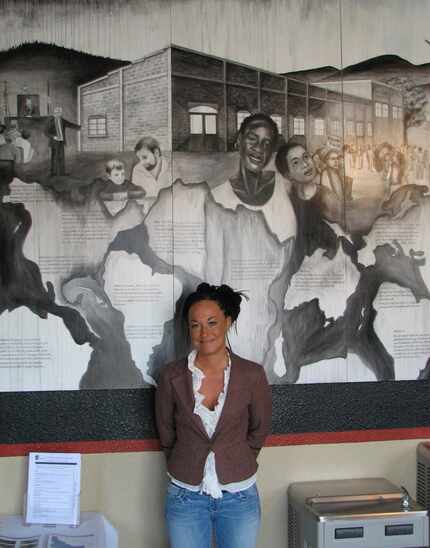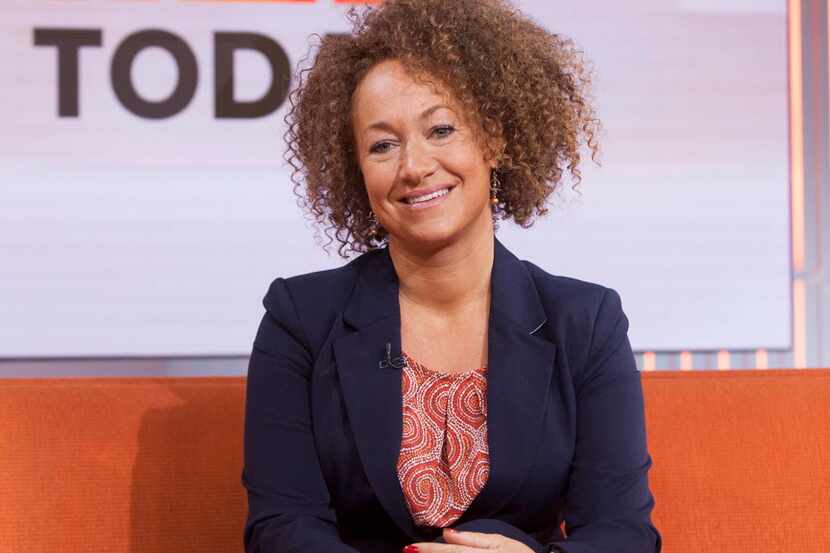There's a long history and a large body of literature devoted to light-skinned African-Americans passing as white. The phenomenon makes historical sense: A country poisoned by anti-black discrimination made passing seem like a viable option.
There was never much reason for white people to go the reverse route and pass for black. Judging from the outcry over Rachel Dolezal, the former Spokane, Wash., NAACP head who resigned after her parents outed her as white, it still doesn't make sense.
Dolezal, who also teaches African-American studies at Eastern Washington University, long claimed she was part black. Then her parents released photos of her as a blond-haired, blue-eyed girl, insisted she was white and added that they were tired of perpetuating her lie.
On the Today show Tuesday, Dolezal explained that she identified as black. "I was drawing self-portraits with the brown crayon instead of the peach crayon and black curly hair," she told host Matt Lauer -- an assertion her father quickly disputed in an interview with TMZ.
Dolezal fascinates because she's a cultural anomaly. The sociologist Charles S. Johnson estimated that 355,000 blacks passed for white between 1900 and 1920. These were the days of The Birth of a Nation, the resurgence of the Ku Klux Klan and rampant lynching. Even those who saw passing as a sign of race betrayal could identify the benefits of cultural privilege, benefits that could range from the right to stay alive to opportunities for social advancement.
What's the difference between that kind of passing and Dolezal's apparent deception? For one, those who chose to pass for white were generally of mixed ancestry. They could legitimately claim to be white, black or both. They also lived in a time of backward concepts, such as the one-drop rule, which asserted one drop of black African blood was enough to define someone as black.

Of course, passing could be a complex matter. Take Anatole Broyard, the New York critic and editor who passed for white largely because he wanted to be seen as a writer, not a black writer. As Henry Louis Gates Jr. writes in his fine essay "The Passing of Anatole Broyard," "In his terms, he did not want to write about black love, black passion, black suffering, black joy; he wanted to write about love and passion and suffering and joy."
Gates also raises an intriguing question: "When those of mixed ancestry - and the majority of blacks are of mixed ancestry - disappear into the white majority, they are traditionally accused of running from their 'blackness.' Yet why isn't the alternative a matter of running to their 'whiteness'?"
What might Rachel Dolezal have been running from or toward? She's clearly not the first white person to identify with the black cause, to play a role, to want to be down. Norman Mailer's 1957 essay "The White Negro" explored the phenomenon of white hipsters under the influence of jazz. "The source of Hip is the Negro," Mailer wrote, "for he has been living on the margin between totalitarianism and democracy for two centuries."
More recently, the rise of hip-hop culture has blurred racial lines further. To my mind, this is one of the positive things about hip-hop, even if it doesn't eliminate issues of cultural appropriation. White rappers including Iggy Azalea and Eminem, despite their many fans, have been castigated as interlopers in black culture, much as Elvis Presley was in Mailer's era.
What might Rachel Dolezal have been running from or toward? She's clearly not the first white person to identify with the black cause, to play a role, to want to be down.
But they didn't lie. They didn't say they were black. They didn't get a deep tan, curl their hair and make claims of racial harassment. Dolezal did. When Dallas' John Howard Griffin darkened his skin and traveled through the Jim Crow South as a black man, it was for a brief social experiment, chronicled in his book Black Like Me.
Dolezal went one big step beyond. As W. Kamau Bell writes in Salon, "If Rachel wanted to devote her life to helping Black people, she could have done that from her perch as a White Person." Race is a complicated enough issue even when we're honest about it. (You could also argue that we're rarely honest about it.)
Race is widely seen as a social construct to begin with, a set of beliefs and prejudices determined not by biology but by people.Ta-Nehisi Coates has explored this idea in the pages of The Atlantic: "There is no fixed sense of 'whiteness' or 'blackness,' not even today. It is quite common for whites to point out that Barack Obama isn't really 'black' but 'half-white.' One wonders if they would say this if Barack Obama were a notorious drug lord."
Dolezal appears to have taken this idea to an extreme. She decided to choose her race. But even if race is a social construct, that doesn't mean racism isn't real. This is what rankles so many about Dolezal. She claimed authenticity and the sting of oppression without having to walk in the shoes of the oppressed.
The Dolezal story is bizarre, but no more so than the cultural history of our country. Racism is our original sin. At an early point in American history, white people determined they could maintain power by enslaving and subjugating black people. We've been living with the consequences ever since. It's a strange, sad tale. Is it any surprise it still yields strange results?


/cloudfront-us-east-1.images.arcpublishing.com/dmn/VVGIMAHWGFF2BPST7A36S4AYJY.jpg)
/cloudfront-us-east-1.images.arcpublishing.com/dmn/OM2IDS6SQBE33ADVQBOHVMSWBE.jpg)
/cloudfront-us-east-1.images.arcpublishing.com/dmn/YH4SVORUYHKSJ64K6VBOV7FDIU.jpg)
/cloudfront-us-east-1.images.arcpublishing.com/dmn/5AJVFJU2ORBDTFBQSTEZQXAH4E.jpg)
/cloudfront-us-east-1.images.arcpublishing.com/dmn/NPNH2YWU6FAI5FTJPNX3XF6WNI.jpg)